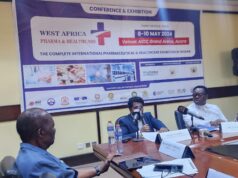President John Dramani Mahama has thanked Ghanaians for accepting to pay more for power as one of the remedies to the power crisis, which worsened last year, collapsing businesses and rendering many jobless.
Addressing Parliament on Thursday where he heaped praises on his administration for overcoming the power crisis, President Mahama also thanked Ghanaians for bearing the brunt of the crisis, and most importantly for agreeing to pay more.
Thermal power costs more
“Much of our power is based on thermal generation now. Akosombo currently produces at about 380 megawatts and that is about 40% of its capacity. Akosombo is a 1,020 megawatts and so most of our generation today is based on thermal power. All our hydro sources are strained because of the low level of the Volta Lake caused by a changing climate. More thermal generation has meant that we have had to pay more in tariffs if we are to maintain sustainable power for our people. I therefore on this occasion wish to thank Ghanaians for your patience and your understanding. Mr. Speaker, I pledge to Ghanaians that I will continue to work to ensure that we will never find ourselves in such a dreadful situation ever again.”
Uproar over increases
The Public Utilities Regulatory Commission (PURC) last December announced a 59.2% increase in electricity tariff, right after businesses had struggled to survive the turbulent energy challenges and a struggling cedi.
The increase in electricity tariff was also worsened by an increase in petroleum products, water and taxes.
Ghanaians led by the Trade Union Congress (TUC) pushed for a downward review of the hikes particularly to save industries from collapse.
After series of meetings with government, it only decreased electricity tariffs for a cross section Ghanaians who are in the low consumption category.
Government repeatedly explained that it needed to increase to service existing debts in order to tackle the energy crisis head-on.
800 megawatts added
President Mahama said on Thursday that an additional 800 megawatts of power has been added to the national grid through the procurement of more power plants.
“About 800 megawatts of power has been added to our generation within the shortest period of time. Fast-tracking the finalisation and commissioning of KTPP added 220 megawatts, Fast-tracking the commissioning of TICO’s combine cycle added 110 megawatts, mobilizing Karpower added another 220 megawatts, and Mr. Speaker, as I speak, Ameri is adding 250 megawatts extra power to our transmission grid. In addition, 180 of Asogli phase two is also available as soon as we can get extra gas for it.”
Much work needs to be done
While taking praise and consolation in somewhat ending the nearly four-year crisis, the President noted that a lot more work needs to be done to sustain the country’s energy supply.
“…But much work still needs to be done to give us the comfort of sustainable generation going forward. I salute the former Power Minister Dr. Kwabena Donkor, and his Deputy Minister John Jinapor and their team of competent technical people. Mr. Armah Kofi Buah and his team at the Petroleum Ministry I salute them. I salute the CEOs and staff of the Energy Commission, PURC, Gridco, TICO, Ministry of Finance, ECG and others. It has taken teamwork and the cooperation of many people to achieve this success. I thank all who stood with me to overcome this challenge that our nation faced. I thank this august house for passing the agreements that made it possible for us to procure these additional plants.”
How to avoid not being there again
“To end up never being there again, we must add even more generation to keep ahead of a robust growth of almost 12% increase in demand every year. Planned power based on MOUs and power purchase agreements we have signed, projects that, an additional generation of about 3,500 megawatts can be achieved by the year 2020. Mr. Speaker if we do this, this will ensure Ghana’s power security and will position Ghana as the power hub of West Africa.”
Other fuel sources
The President added that, “Additional power into the national grid, will aim at diversifying fuel sources from gas to crude oil, LPG and LNG. Additionally, there will be an injection of renewable energy; Currently Ghana has about 25 megawatts of solar power being transmitted into the national grid. This is set to increase to about 200 megawatts over the next four years. Already, several small and medium enterprises have been provided with rooftop solar plants following my announcement of a target of over 200,000 rooftop solar projects for small businesses and residential users.”
By: Dan K. Prince//dailyviewgh.com
Editor’s Email: dailyviewgh@gmail.com




























